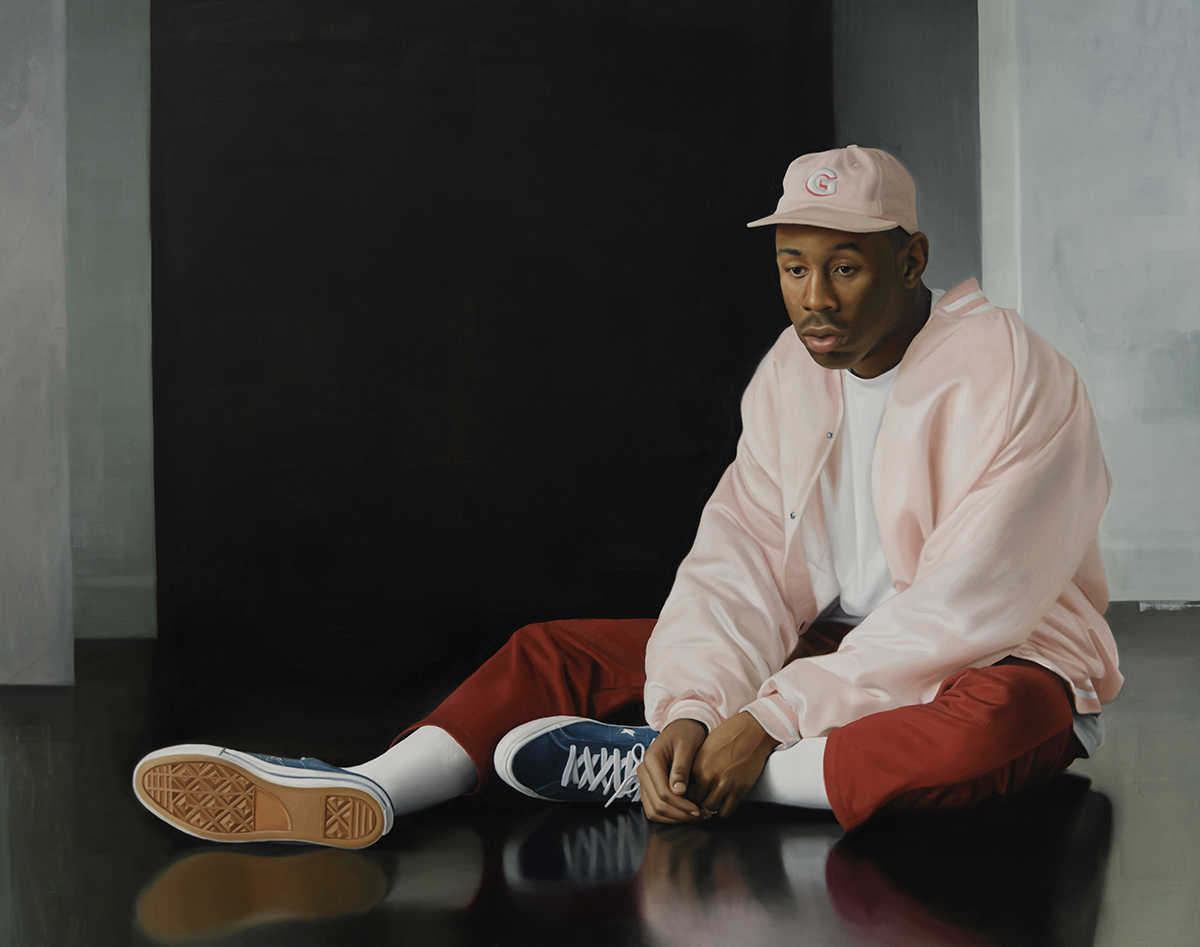When Fucking Awesome adds a skater to its professional roster, the brand debuts a deck with his yearbook picture. Tyler, the Creator is presently riding one of Sean Pablo Murphy’s class photo boards. Fashion folk have likely seen Chloë Sevigny’s on their Instagram feeds. The most coveted model belongs to the late, tremendously influential Dylan Rieder. Supreme’s Los Angeles shop created a touching memorial with the jet black decks. But the image of baby Rieder — flashing his disarmingly devilish grin in a pint-sized leather jacket — isn’t a yearbook picture at all. It’s a remarkably realistic painting by Delfin Finley.
At just 23-years-old, Finley possesses an exceptional gift for portraiture. Everything he paints (fraying denim, khaki creases, Converse’s distinctively patterned sole) is rendered with thrilling detail. Finley’s degree of realism, shown in his portrait of Rieder, can make it difficult to distinguish between painting and photograph. Yet the work’s technical skill does not obscure its emotional impact. Finley’s subjects include Tyler, Earl Sweatshirt, and skater Na-Kel Smith: people we most often see energized, in motion. On a stage or a skateboard, they are laughing and pushing and doing. Finley captures another side of his sitters. In his resplendent oil paintings, they are contemplative and composed.
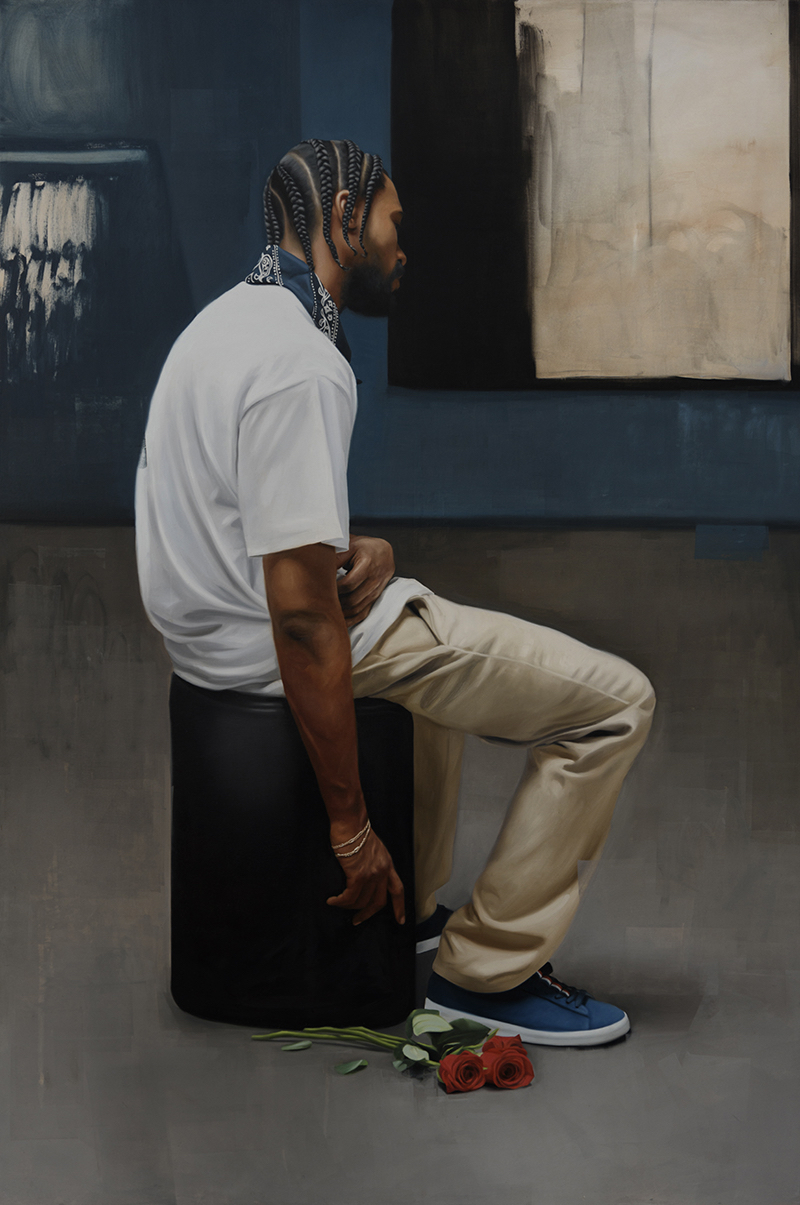
These portraits form Finley’s first-ever solo show, which opens on Saturday in his native Los Angeles. The body of work, titled Some Things Never Change, reflects on pervasive racism and its manifold impacts on people of color. In several paintings, Finley emphasizes our nation’s history of violence against blackness. In others, the unbearable weight of this legacy is apparent in the subjects themselves. In each of his works — whether created for a nine-foot-tall canvas or a skateboard — Finley asserts beauty above all, representing his subjects with reverence and great care. Ahead of his show, we discover how his sensibility and skill developed.
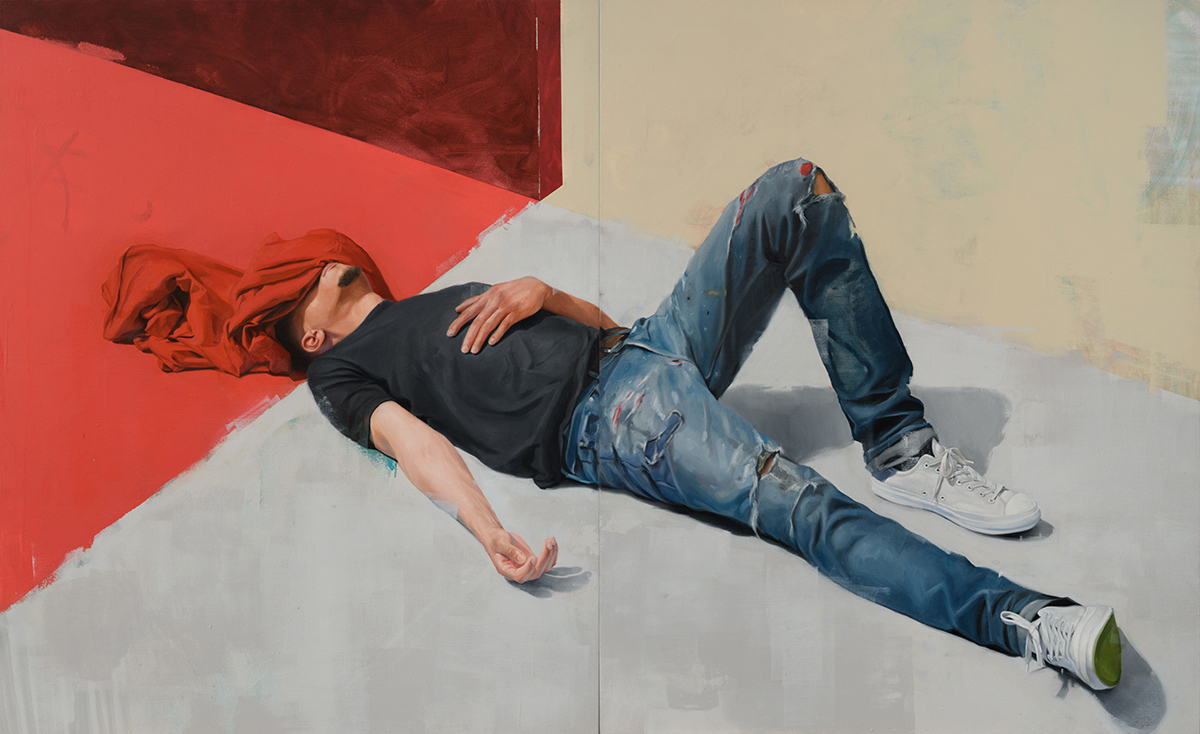
Where are you from, and what kinds of things were you interested in growing up?
My parents, both fashion designers, raised my brothers and me in their studio loft in Los Angeles. Creativity and individuality was highly celebrated in our household, so my decision to become an artist was welcomed and strongly supported by both of my parents. I was very interested in football and basketball from a very young age, but instead of joining a team, I drew all of my favorite players. My first journals were more visual stories than essays. As a kid, I think it was all about discovery. It was never really about creating a “finished work.” I have always been an artist first before anything else.
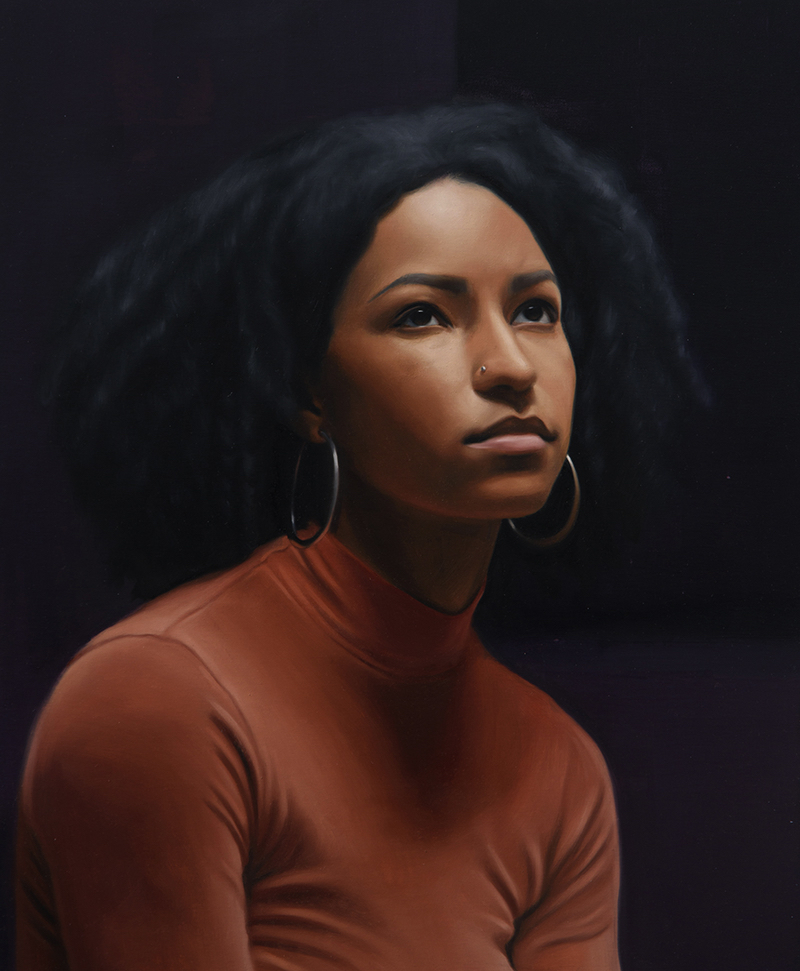
Tell me about a work or an artist you connected with early on.Growing up with a design studio as my playground, I gravitated towards pen and paper. Everything I did was about expressing myself through drawings. My dad introduced me to some of the most innovative and prolific muralists in Los Angeles at an early age, so I have great memories of sitting on the curb watching amazing work go up on the side of commercial buildings and concrete walls. Great artists like Retna and El Mac are still amazing mentors and local heroes who have gone international with their art. My neighborhood, in South Central, L.A., has continued to be an inspiration for me in many ways.
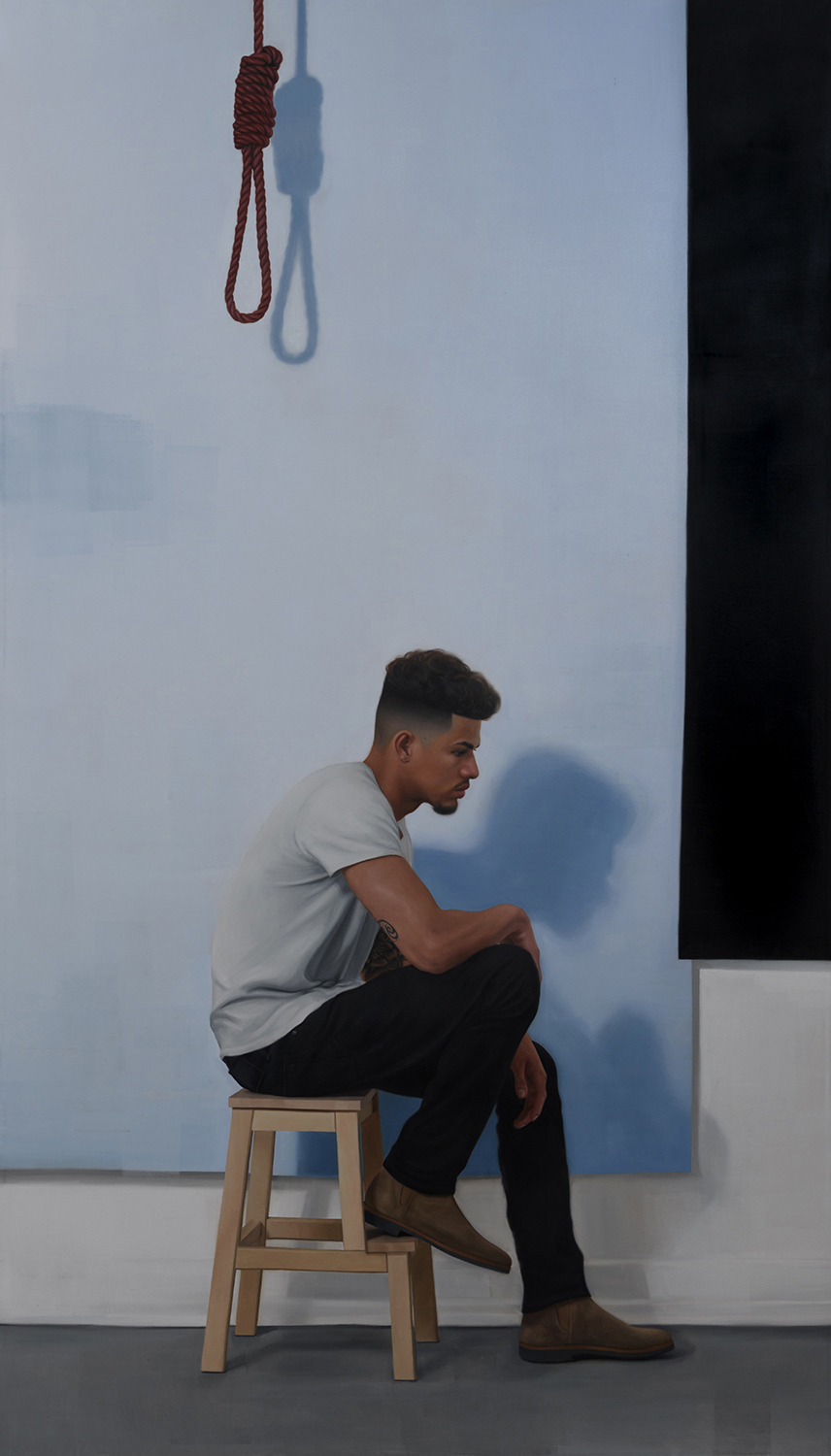
Have you always worked primarily with paint? Have you always made portraits?
I’ve been drawing my entire life, but I never really took it seriously until I got to college. I was really into graffiti in high school, I devoted most of my time to sneaking out at night and painting the city. So when I graduated from high school, I didn’t really know what to do. At the same time, one of my two older brothers was graduating from art school, and I was able to see how much school helped him progress as an artist. I figured it wouldn’t hurt to try a painting class at a junior college. I immediately fell in love with it. I felt crazy for not trying out painting earlier. All of my work has always been figurative. People have always interested me more than anything else.

Your style is incredibly realistic. How did it develop?
I didn’t really set out to be a “realistic painter.” But I’m driven to be faithful to what my eye sees, so I paint what’s in front of me: nuances, shadows, folds. The essence is in the details.
You’ve painted amazing portraits of Tyler, Na-Kel, and Earl. Tell me about your relationships with these guys, and how you wanted to represent each of them in your work.
I consider all these guys at the top of their game, in their respective fields. They’re all my friends, and a source of creative energy. I went to elementary school with Earl, so we’ve been close pretty much our whole lives. As he’s created a place for himself in music and I as an artist, we have always found a way to support each other. I’ve known Tyler since I was in middle school. It’s crazy to think that it has been almost ten years now. We’ve always had a lot of the same interests, so that helps us stay connected. It’s amazing to see how much he has grown since then, and amazing to see the impact he makes on so many people’s lives. I met Na-Kel just from being around all of these guys and being on the block. I’ve always admired his skating and it’s great to see how he’s really making shit happen for himself.
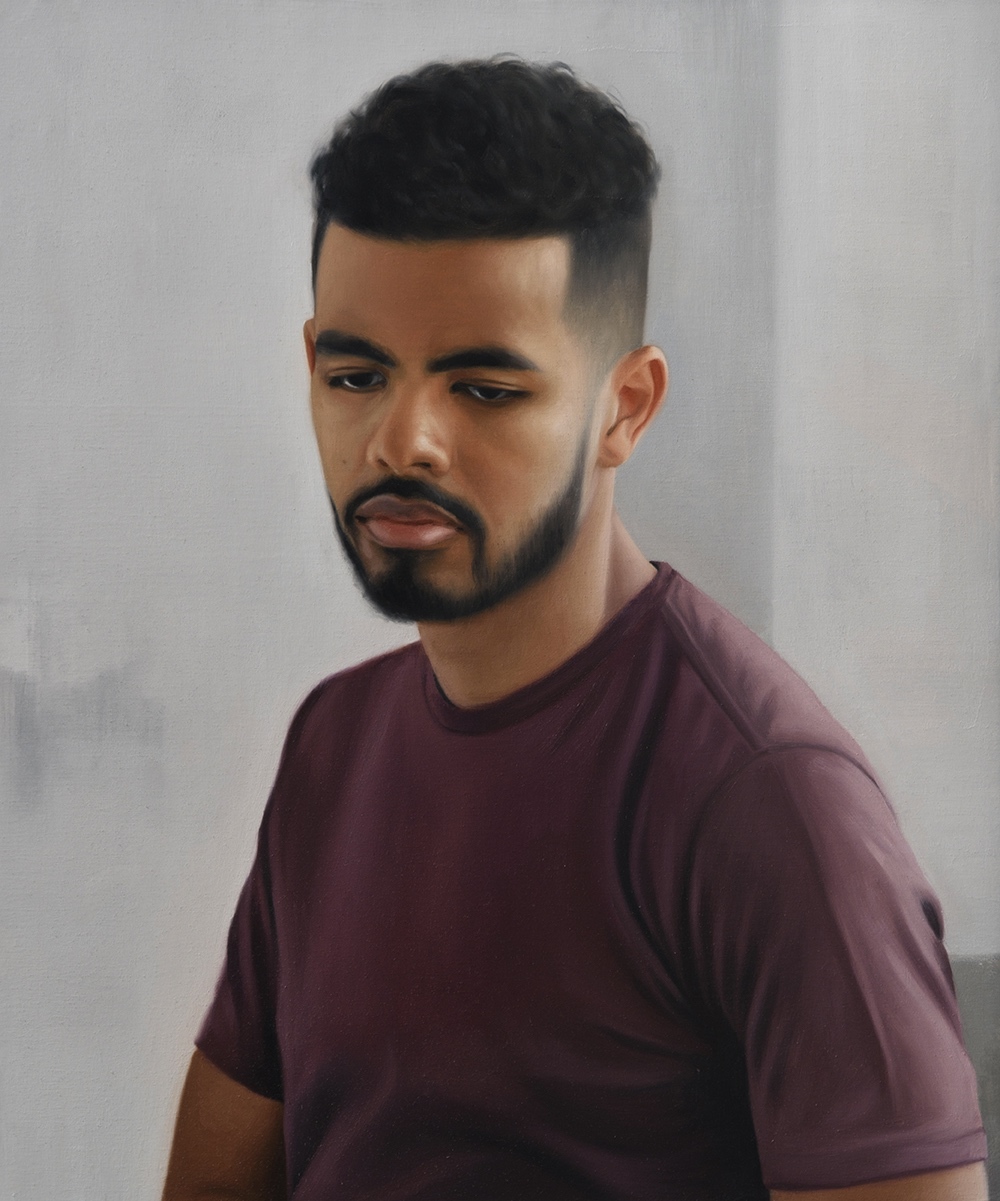
It wasn’t until I saw Dylan Rieder’s FA deck in person that I realized it was a painting, not a photo. How did that work come about?
I connected with Fucking Awesome through hanging out with my friend Sage Elsesser, who skates for Fucking Awesome as well. They commissioned me to paint Dylan for a new board, and I was more than willing to participate in the project. I never got to meet Dylan personally, but he made such a profound impact on so many people, including myself. I’m glad I was able to celebrate his life through this piece.
What do you try to bring out of your subjects and communicate in your portraits?
[When I’m painting someone], I usually start describing what’s on my mind, which normally leads to a pretty deep conversation that helps set the mood for the painting. It’s a very organic and unscripted approach to inspire the person I’m painting to share their feelings through his or her expressions.
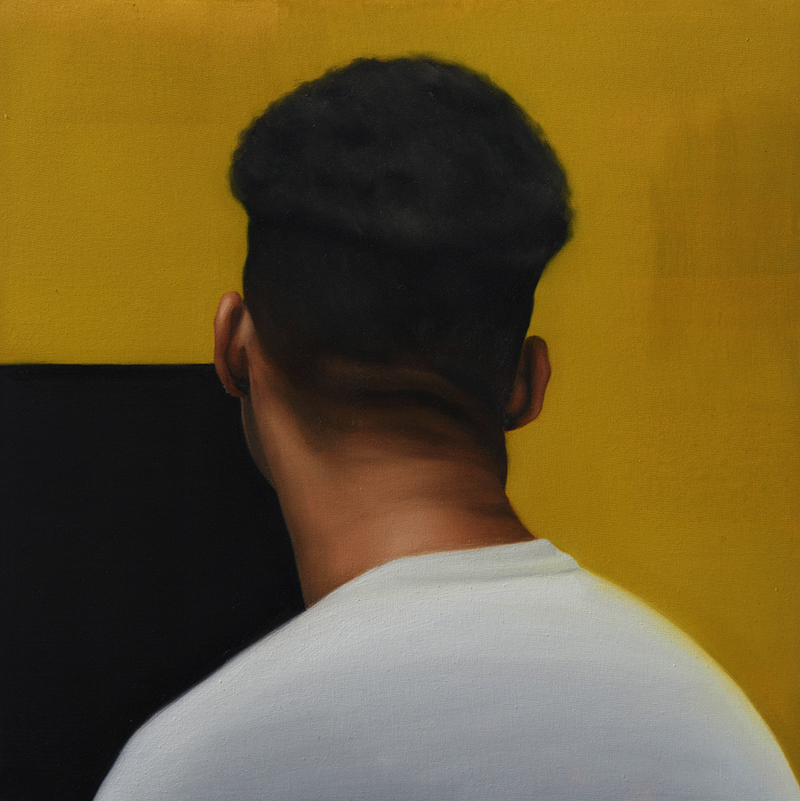
Let’s talk about Some Things Never Change. What are the ideas or motivations that shape it?
Other than one painting, this is all brand-new work painted just for this show. In each painting I feature the image of a person of color. Each person has his or her own personal issues, yet we have something that will forever bind us together. We are linked by the instances in which we felt not in control of our present, much less our future. We are judged by the color of our skin and are the victims of brutality and hatred. It limits our spirit and too often ends our lives prematurely. I painted each person with that wearing heavily on my mind.
The first piece I painted captures the essence of what drove me to create this collection. My father represents all men of color, who through their mere existence cause such a hateful, violent reaction against them. He holds a shovel in his hand, in what appears to be a gesture of inevitability and hopelessness. The [work’s] title, It’s Only a Matter of Time, speaks to the danger that we, as black men, face on a daily basis. Do I pick up a shovel and help society prepare my grave? Or do I raise it in defiance?

What do you hope people take from the show?
I hope people will question the status quo. I hope that there will be even more questions they demand answers to. And most importantly, I hope that it makes everyone rethink their own biases. We have a choice on how we address the injustices we all see happening around us. Wake up and demand change where change is desperately needed. We all have the power to make a difference. Once we see and acknowledge what is really going on, we can no longer turn a blind eye and refuse to see again.
‘Some Things Never Change’ is on view at Lora Schlesinger Gallery from July 22 – August 26, 2017. More information here.
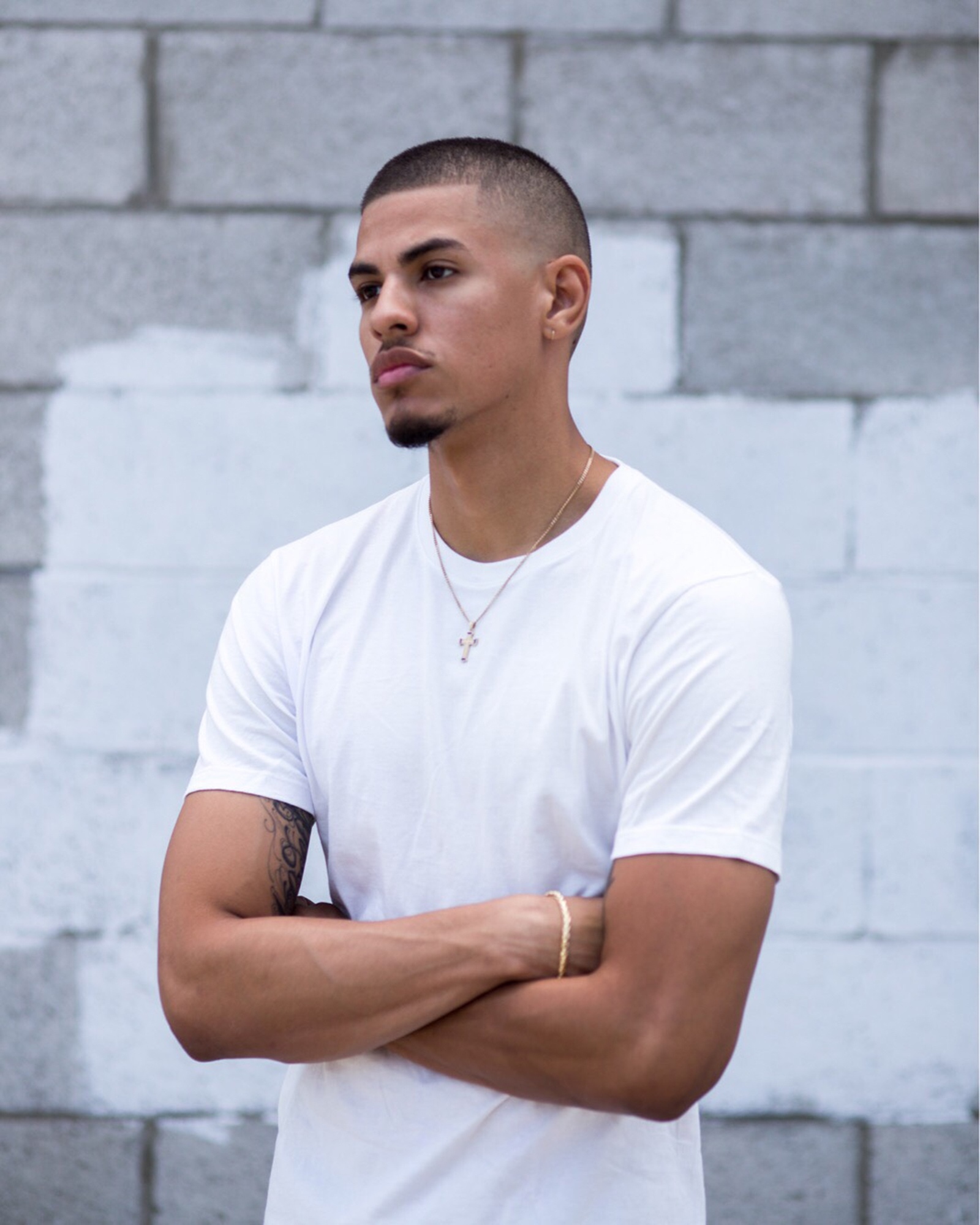
Credits
Text Emily Manning
Artwork courtesy Delfin Finley
Portrait Kohshin Finley
